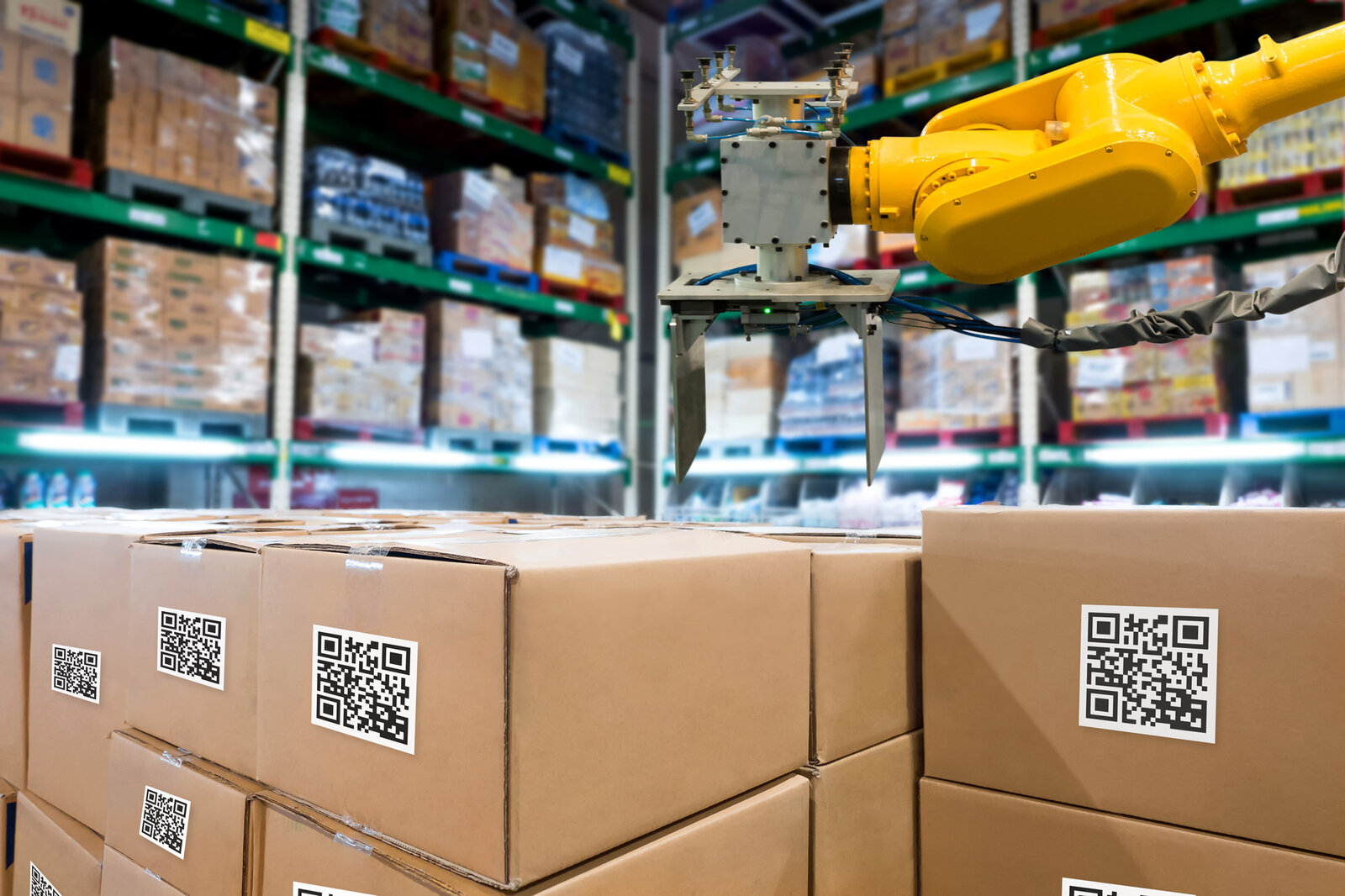Feature
Medtech’s digital supply chain revolution: innovations and challenges in 2024
Supply chain challenges remain a major concern for the medical device industry in 2024. Manufacturers are exploring various strategies to bolster resilience, including adopting new technologies and embracing emerging practices. By Bernard Banga.

Credit: Zapp2Photo / Shutterstock
The era of the easy supply chain is over, with the effects of the Covid-19 global shutdown compounded by geopolitical risks and inflationary shocks.
The economic crisis brought about by the pandemic significantly disrupted global supply chains. The recovery of economic activity is now hampered by shortages and bottlenecks at every level of the value chain and logistics flows, explains Laurent Giordani, founding partner at the consulting firm Kyu Associés, which specialises in operational performance and risk management.
“Today, the medical device sector frequently faces critical availability issues, both for certain highly specialised products and common consumables”, adds Cécile Vaugelade, Director of Technical and Regulatory Affairs at SNITEM, the French Medical Device Industry Association.
As of 2024, medical device manufacturers are allocating 3-5% of their revenue on supply chain services. Supply chain costs now represent up to 20% of their revenue, marking an increase of 2 to 3 percentage points since 2022. This escalation has been driven by rising costs in shipping, labour and raw materials. Geopolitical risks and inflationary shocks now define the new landscape of the medical device supply chain.
Escalating geopolitical tensions in Europe, the Middle East and China
The current conflicts and geopolitical tensions in Ukraine and the Middle East have significantly impacted medical device supply chains. The sanctions imposed on Russia have led to disruptions in the supply chains of critical components and raw materials such as metals, minerals and gases. While no critical shortages of medical equipment have been reported as a result of the war in Ukraine thus far, the European Medicines Agency (EMA) is closely monitoring the supply situation in Europe.
The Hamas attack on Israel on October 7 2023 disrupted 12% of global shipping traffic. Collateral damage to global trade included attacks on merchant ships at the entrance to the Red Sea by Houthi rebels in support of Palestinians. These disruptions in international logistics have caused delays in component and raw material deliveries, leading to stock management challenges at an estimated total cost of $150 million. Shipping costs have also risen by 15-20% due to rerouting of maritime routes, with insurance costs soaring to $100 million.
“These disruptions compound with another bottleneck: the commercial slowdown in China, a key player in the production of plastics, polymers, and electronic components. These geopolitical factors expose medical device manufacturers to “unprecedented surges in material and transportation costs, as well as increasingly lengthy and unpredictable procurement delays”, explains Florent Surugue, Director of Communications & Economic Development at SNITEM.
Medtech giants overhaul supply chains amid rising costs
These added supply chain costs are putting pressure on the margins of medical device manufacturers, prompting them to resize their supply chains and reconfigure their global manufacturing networks. Medtronic, for example, is closing at least 5 manufacturing sites in 2024 and reducing its supplier base from approximately 65,000 to around 200, focusing on strategic suppliers that can provide high quality, high service and continuous improvement at competitive prices. The company is also consolidating 8 distribution centres into 2 ‘super distribution’ hubs.
Most major medical device manufacturers are currently strengthening their processes by enhancing the pooling and standardisation of supplies. They are involving their end customers, hospitals and clinics more closely in demand forecasting and production planning, and in sharing consumption data. Shared use of storage and transportation resources across different medtech companies is expanding through shared logistics platforms and providers. This approach enables economies of scale, and optimises capacity utilisation.
According to a report on supply chains by Catena Solutions, industrial organisations nearly doubled their average spending on supply chain innovation last year, with the majority of this investment spent on digital technologies.
Using digital innovation to make supply chains smarter
New supply chain platforms are emerging that leverage 3D printing, generative artificial intelligence (gen AI) and next-generation blockchain tools. 3D printing allows manufacturers to produce medical devices in small batches directly on-site at hospitals or nearby, reducing shipping time and costs. This decentralised production enables manufacturers to quickly meet urgent needs, such as producing spare parts or customised devices.
Additive manufacturing (3D printing) is transforming medical technology supply chains by enhancing the flexibility, responsiveness and sustainability of manufacturing processes. The Internet of Things (IoT) is also being used to enable real-time tracking of shipments and inventory through connected sensors, and to monitor the temperature and humidity conditions of medical devices during transport. Predictive maintenance of production and logistics equipment is being conducted through data analysis. As of 2024, IoT has become an essential component in automating logistics processes in smart warehouses.
New smart supply chains leveraging AI, the IoT and blockchains
Finally, gen AI is being used to process large sets of historical data, market trends and external factors to enable intelligent order management with extremely accurate demand forecasts. This allows for just-in-time replenishment orders, reducing unsold inventory. Gen AI tools can also predict potential production equipment failures, thereby reducing downtime, by analysing real-time images and production data to detect anomalies or manufacturing defects. Finally, gen AI algorithms can also generate optimal delivery routes by considering multiple factors such as traffic, weather conditions and time constraints.
These gen AI tools, combined with emerging blockchain technology – a secure database shared across a network of participants – are set to revolutionise supply chain management, logistics and procurement in the medical technology industry. All these new technologies are dramatically improving the sustainability and resilience of supply chains in an increasingly complex environment.
Suggested pull quote. “These geopolitical factors expose medical device manufacturers to “unprecedented surges in material and transportation costs, as well as increasingly lengthy and unpredictable procurement delays”.
Medtronic offers a comprehensive RPM platform called CareLink which helps physicians, patients and carers manage health metrics and medical adherence. It has proved particularly useful in the management of diabetes. Real-time data is sent to CareLink via various devices and monitors, and patients can connect with their care team.
Accuhealth is leading on smart Bluetooth devices including blood pressure monitors, a glucose sensor, oximeter, sleep and resting heart monitor, and more. The company also offers a range of remote patient monetary vendor tools and focuses on international outreach with many of its digital technologies available in multiple languages.
Boston Scientific’s LATITUDE is a popular home monitoring system that provides doctors with access to healthcare data from certain cardiac implants such as pacemakers and defibrillators. The technology can detect the tiniest of changes in cardiac function and immediately warn the patient and clinician of impending heart failure
“Major players in the wearable technology market, such as Sony, Apple, Samsung Electronics, Xiaomi, Huawei, Garmin, among others, are also expected to drive growth in the global wearable tech market,” predicts Garcia. “Their proficiency in developing innovative wearable technology together with the incorporation of AI capabilities puts them in a strong position to take advantage of the growth in the RPM market.”
Key players include Medtronic, Accuhealth and Boston Scientific
says Elia Garcia, a GlobalData analyst

Caption: The US Pentagon is seeking to reduce carbon emissions through a range of programmes, but will it go far enough? Credit: US DoD
Total annual production

$345m: Lynas Rare Earth's planned investment into Mount Weld.

Caption. Credit:

Phillip Day. Credit: Scotgold Resources